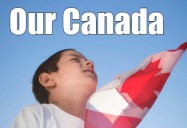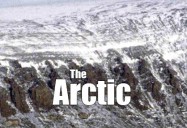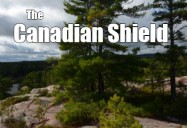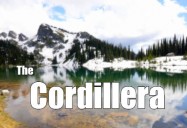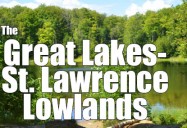
- School District 5 - Our Canada Series
School District 5 - Our Canada Series
Our Canada - The Great Lakes St. Lawrence Lowlands
Width Height
Subject(s): Canadian Social Studies, First Nations Studies, Social Studies
Grade Level: 3 - 5, 6 - 8, 9 - 12
This is Canada's smallest geographic region in terms of area, however, it contains the most people. Known as the "Industrial Heartland" of Canada, its climate, soil and location make it ideal for industry, tourism, and agriculture. Water plays an important role in the region. The St. Lawrence River and Great Lakes have been important transportation routes for thousands of years. First used by the Anishinaabe, Huron-Wendat and other First Nation groups, today, this series of locks, dams, and channels allow for the passage of huge ships and barges.
Includes PDF Resource Guide.
|
Running Time: 18:15 Country of Origin: Canada Captions: |
Producer: McIntyre Media Inc. Copyright Date: 2016 Language: English |
Video Chapters
-
The Great Lakes - St. Lawrence Lowlands Region 1:50
This is Canada's smallest geographic region in terms of area... -
The Niagara Escarpment 2:24
This exposed edge of fossilized sea, creates amazing landscapes... -
St. Lawrence Lowlands 1:32
The St. Lawrence Lowlands are broken up by the Monteregion... -
Indigenous Peoples in the Great Lakes - St. Lawrence Region 1:17
The St. Lawrence River and Great Lakes region has been... -
The Arrival of European Settlers in the Great Lakes - St. Lawrence Region 0:45
Life for First Nations Peoples changed greatly when the first... -
The Industrial Heartland of Canada 1:11
Known as the "Industrial Heartland" of Canada, Ontario's... -
The Value of Waterways in the Great Lakes - St. Lawrence Region 1:47
Water plays an important role in the region. The St. Lawrence... -
Agriculture and Industry in the Great Lakes - St. Lawrence Region 3:15
In the Great Lakes St. Lawrence region, the climate, soil and... -
The Climate in the Great Lakes - St. Lawrence Region 2:06
The climate in the Great Lakes - St. Lawrence is warmer than...
TRANSCRIPT
Close- Canada has six different geographic regions. There's Arctic tundra, fertile lowlands, rolling plains, majestic mountains, and vast forests. Each region has a wide variety of vegetation and wildlife, natural resources, industries, and history.
- The climate in each region is unique. You may live in a region where days are warm in the summer and cold in the winter. Some regions have a lot of precipitation, and others can be quite dry.
- If you were to drive from Quebec City southwest past Montreal and along Highway 401 all the way to Windsor, you might notice that the road is built through a mostly flat or rolling landscape. Do you know which geographic region you are in during this drive? Yes, it is the Great Lakes/St. Lawrence lowlands region.
- Although this is our smallest geographic region, more people live here than in all of the rest of Canada. The region is actually divided into two different sections. The Great Lakes area lies between Lake Ontario, Lake Erie, and Lake Huron. Instead of the rock you find near the surface in the Canadian Shield, the Great Lakes St. Lawrence lowlands has mainly sedimentary rock and glacial deposits. Deep soil, gravel, and sand were left by the glaciers as they melted.
- This area was once entirely covered by ancient seas, and later by hardwood forests. Today the fertile soil here makes this land ideal for agriculture. The Great Lakes also have the largest percentage of the world's fresh water. They were formed many thousands of years ago, when the thick glacier ice began to melt and fill the depressions formed in the bedrock in earlier periods.
- Bedrock is the solid rock lying below surface materials, such as soil, gravel, and sand. If you want to see the bedrock without digging, go to the Niagara escarpment. It is one of the world's natural wonders, and has been designated a UNESCO world biosphere reserve.
- Imagine a time when the world looked completely different, when life on Earth was found only at the bottom of a vast and ancient sea. A world filled with magnificent corals, giant sea scorpions, nautiloids, and other strange creatures, that thrived when life on the planet was still young, as plants were first starting to appear on land and 200 million years before the first dinosaurs walked the earth. Now imagine you can actually see and touch this ancient sea floor in the here and now.
- After nearly half a billion years of fossilization, continental shifting and migration, and erosion from the melt waters of receding glaciers, the exposed edge of this fossilized sea creates the most amazing of natural landscapes in southern Ontario.
- It's been called The Mountain, The Ledge, The cliff, The Great Ark, The Backbone of the Land, and it's said that Canada's First Nations once called Ontario's Niagara escarpment The Giants Rib.
- The edge of this ancient seabed is exposed from Rochester, New York, into Canada at Niagara Falls, and northwards for more than 700 kilometers through the heart of Ontario. At its northernmost tip in Tobermory it disappears under Lake Huron to reappear in Wisconsin.
- Not only is it an amazing fossil record spanning 50 million years of Earth history, the escarpment contains more than 100 sites of geological significance, including some of the best exposures of rocks and fossils of that period to be found anywhere in the world. The escarpment as we see it today was most recently shaped by the recession of the glaciers at the end of the last ice age, around 14,000 years ago. The deep gorges and valleys along its length were carved out by the force of glacial melt waters, exposing its layers, and creating the foundation for one of the world's most unique natural areas and ecosystems.
- Today the escarpment soars 510 meters at its highest point within Ontario, and is also home to Canada's longest footpath. The Bruce Trail.
- Near Kingston, Ontario, the Canadian Shield extends south to form the Thousand Islands in the St. Lawrence River. This divides the Great Lakes lowlands from the St. Lawrence lowlands, which stretch from Brockville, Ontario, east through southern Quebec. It is a long, narrow area that follows the St. Lawrence River to the Atlantic Ocean. It lies between the Canadian Shield to the north, and the Appalachian region to the southeast.
- Limestone lies under much of this area today. It was formed beneath ancient seas and then it was covered with glacier ice. Eventually the land rose as the ice began to melt 13,000 years ago, and the St. Lawrence lowlands were formed.
- The rich soil found here also makes this area ideal for farming. The clay in this region is used to make bricks and tiles, the sand and gravel deposits provide materials for constructing roads and buildings.
- These lowlands were once mostly covered by mixed wood forests, and many kinds of animals have roamed through the woods.
- [MUSIC PLAYING]
- The St. Lawrence lowlands are broken up by the Monteregian Hills. They're a series of unique, isolated mountains rising from the plains, beginning with Mont Royale in Montreal and at Mount Brom to the east.
- The Great Lakes and St. Lawrence lowlands have been inhabited for many thousands of years by First Nations people. The Anishinaabe lived north of Lake Superior and east to Peterborough. The Haudenosaunee Confederacy was also known as the Six Nations, and their great law of peace united them. They settled in villages with birch bark long houses and they canoed along waterways to trade with other tribes.
- The [? Huron-Wendat ?] people lived east of Lake Huron, and traded with the Algonquin people who lived in the Ottawa River area. Jacque Cartier found Iroquoian speaking people along the St. Lawrence River. The Mi'kmaq people on the shores of the Gaspe Peninsula were one of the first aboriginal groups to meet European explorers.
- All of these groups lived off the land, finding what they needed by hunting and fishing. They gathered berries, wild rice, and plants for medicine. Some also grew crops of corn, beans, and squash.
- Because Mother Earth provided food, water, and materials for clothing and homes, First Nations people all had a respect for the land. They were caretakers of the earth and they only took what they needed.
- Things began to change for the First Nations people when Europeans arrived here. In 1608 Champlain created the settlement of Quebec. As more settlers, explorers, and fur traders came, they traveled further inland along the St. Lawrence River and the Great Lakes. Farming began along the rivers and lakes.
- Then United Empire loyalists came to the region when the American colonies rebelled, and formed a new country called the United States of America. Later Scottish and Irish people immigrated to this region, and today people from many different countries live here.
- [MUSIC PLAYING]
- The Great Lakes/St. Lawrence lowlands region is known as the Industrial Heartland of Canada. More than 3/4 of Canada's manufactured goods are produced here. Efficient transportation routes and a large population make this an ideal place for industries. Large cities in this region include Toronto, which is Canada's largest city.
- [MUSIC PLAYING]
- Montreal is the second largest French speaking city in the world, and it is also a very bilingual city. Part of Quebec City is over 400 years old, with narrow streets and stone buildings. People choose to live in the Great Lakes/St. Lawrence lowlands region for a lot of reasons.
- [MUSIC PLAYING]
- There are many cities and towns to provide jobs, the climate is usually pleasant, fertile soil makes many kinds of agricultural possible, and the waterways and parks provide a variety of recreational opportunities.
- Water plays an important role here. The St. Lawrence River and the Great Lakes have been important to trade for thousands of years. During the fur trade they were the main transportation routes. Today large ships and barges use these waterways to move cargo such as minerals, grain, and manufactured goods.
- The St. Lawrence Seaway is a series of dams, locks, and channels that were designed to allow huge ships to travel past rapids and waterfalls. Locks are like elevators for ships. The Welland Canal is the largest lock in the world, bypassing Niagara Falls. If you've ever visited this famous falls you know why ships cannot get past this land form.
- This seaway was one of the most challenging engineering accomplishments in history. When it opened in 1959, it provided a deep water marine highway that allowed ships to travel all the way from the Atlantic Ocean to the Great Lakes ports on Lake Superior and Lake Michigan.
- Tourism is important here. For example, people from all over the world come to see Niagara Falls. The water from the upper Great Lakes that flows over these falls could fill 1 million bathtubs every minute. Some of this water is routed to a hydroelectric power plants, where the falling water turns turbines that generate electricity.
- Hydroelectricity is the cleanest electric power on earth. There are no pollutants or greenhouse gases produced, and no fossil fuels are used. Almost 2/3 of Canada's power is generated by water.
- Agriculture is also important in this region. The Great Lakes/St. Lawrence lowlands has the second largest farming area in Canada. Nearly 25% of all crops in Canada are grown in the region's rich soil. Flat land and a long growing season produce crops such as corn, barley, wheat, and oats. In the Niagara region of Ontario you can see lots of fruit trees like cherries and peaches. Grape vines grow in rows producing grapes for a large wine industry.
- Further inland gently rolling hills change the landscape again. Here cattle and sheep often graze in the grass fields. Cows on dairy farms produce the milk that you drink, the butter for your bread, and the cheese that you enjoy. Quebec's dairy farmers supply nearly half of Canada's milk products. Some of their cheeses have won awards around the world.
- Pig and poultry farms provide us with the meats in our grocery stores. And, of course, who can forget maple syrup. Mmmm. Did you know that Canada produces about 3/4 of the world's maple syrup, and most of this comes from Quebec. First Nations people enjoyed this sweet sap long before Europeans arrived. They showed the settlers how to tap maple trees and boil down the sap to make sweet syrup.
- Mining is not as important in the lowlands region as it is in others like the Canadian Shield. But in southwestern Ontario oil and gas resources have led to a large petrochemical industry. Goderich, Ontario has the world's largest salt mine, and it has been operating for over 150 years. Sand and gravel pits supply material which is important for building roads and making concrete blocks, bricks, and pipes.
- These natural resources reflect the geologic history of the formation of this region under ancient seas and later glacial activity. Forrest resources are a major industry in the St. Lawrence lowlands area. Much of Canada's newsprint is produced in Trois-Rivieres, Quebec.
- Montreal, Canada's second largest city, is a major financial and industrial center. Montreal is the only place in the world where complete aircraft can be built using parts that are all made locally.
- The Greater Golden Horseshoe is the area wrapped around Toronto, extending from Niagara to Peterborough. Here one finds industries related to finance, technology, manufacturing, food, and biomedical products. Hamilton has several steel production companies. Alison, Brampton, Cambridge, and Oshawa have large automotive factories. Transportation companies are located in Toronto, Vaughan, and Brampton, and are often near railways and highway systems for the easier movement of people and goods.
- The southern climate here is warmer and easier to live in, but you still need a good winter coat, hats, and mitts. The weather patterns are strongly affected by water. In the winter, Arctic air masses bring cold stormy weather, lots of snow, and sometimes severe ice storms. In summer, warm moist air travels north from the Gulf of Mexico, creating pleasant and sometimes hot, humid days.
- The milder climate here supports a variety of different habitats. Wetlands provide a home to many types of fish. Their marshes and bogs are essential to the ecosystem. While much of the original forest was cleared for farming and settlement, you will still find forests with many types of deciduous and coniferous trees. Trees like maple, oak, ash, and beech lose their leaves in autumn and grow new leaves in spring. Coniferous trees such as pine and spruce have needles that are green all year round.
- The Carolinian forest region in southwestern Ontario has more rare types of plants and animals than anywhere else in Canada. Tulip trees and black walnut trees grow here, and only here can you find the endangered Lake Erie water snake.
- The Great Lakes/St. Lawrence lowlands region has many types of wildlife, including deer, fox, coyotes, squirrels, and raccoons. Waterfowl, songbirds, snakes, and amphibians add to the diversity. Places like Point Pelee National Park attract thousands of people who come to watch millions of migrating birds every year.
- The St. Lawrence/Great Lakes lowlands region is the smallest geographic region in Canada, but it has many amazing features and a varied landscape.
- [MUSIC PLAYING]
- With so many people living in the region, it is especially important to protect the unique habitats and conserve the natural ecosystems. National parks, provincial parks, and conservation areas help to preserve this unique, most southern region in Canada. We want people in the future to be able to experience the beauty we enjoy today.
- [MUSIC PLAYING]
TRANSCRIPTS:
Interactive Transcript
Transcript (PDF)
